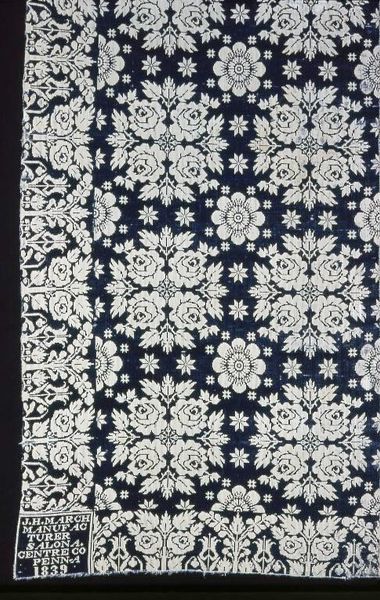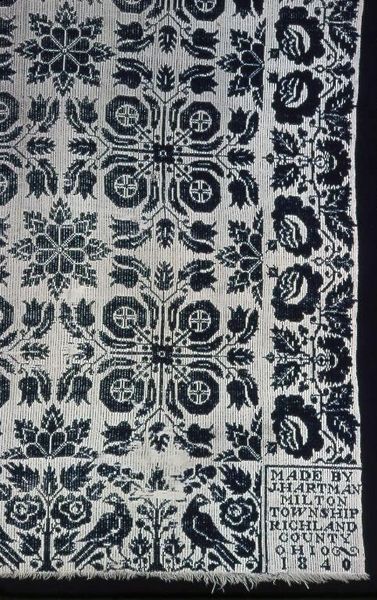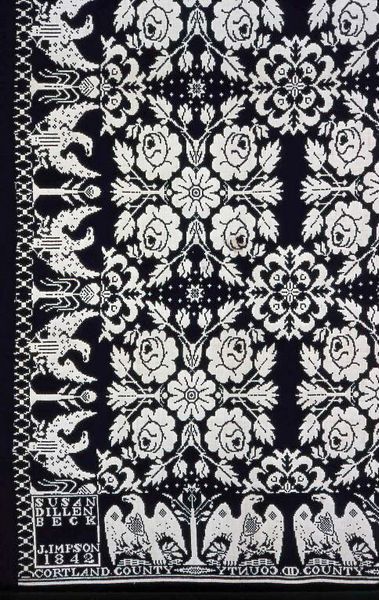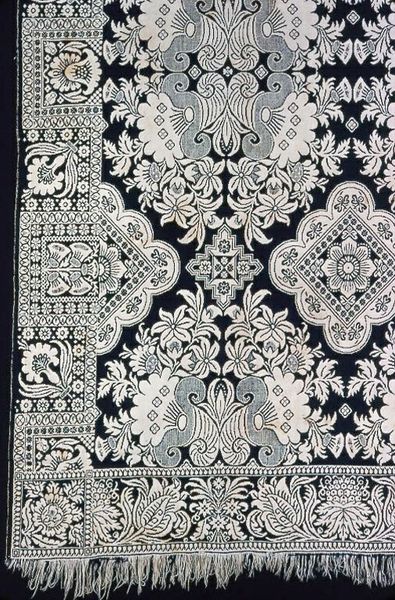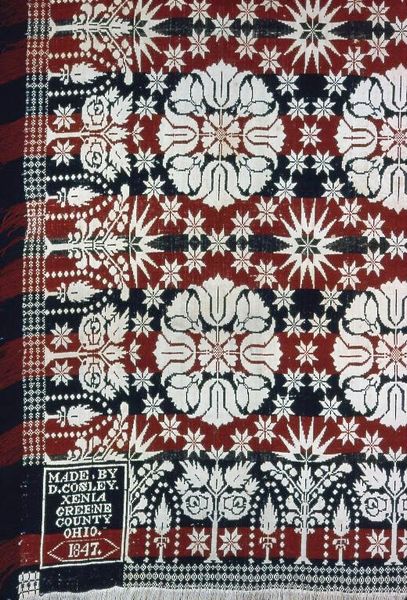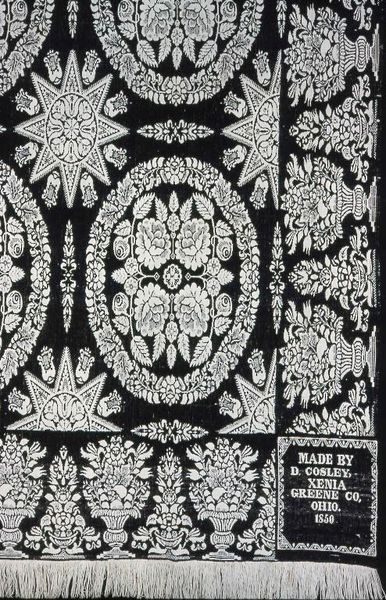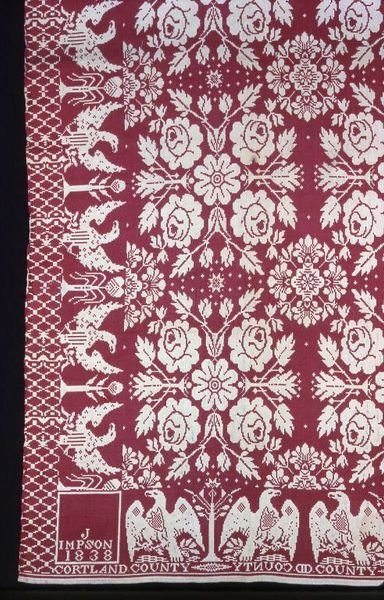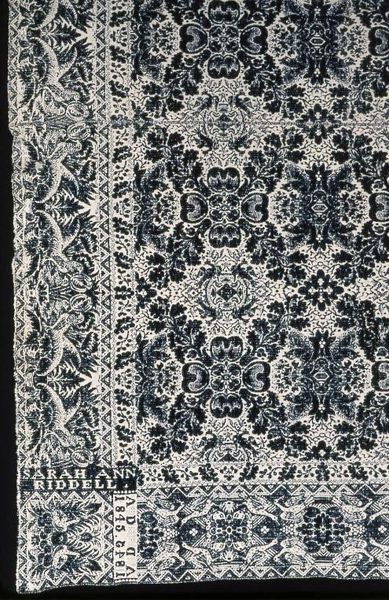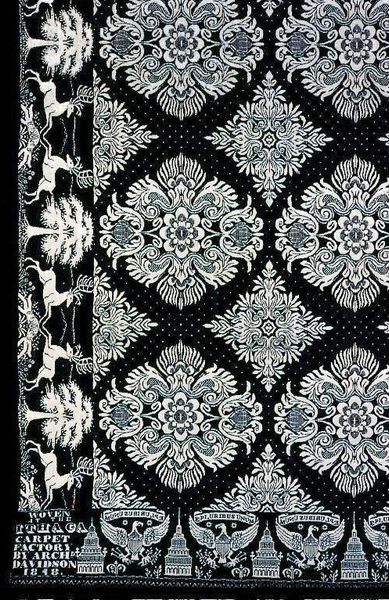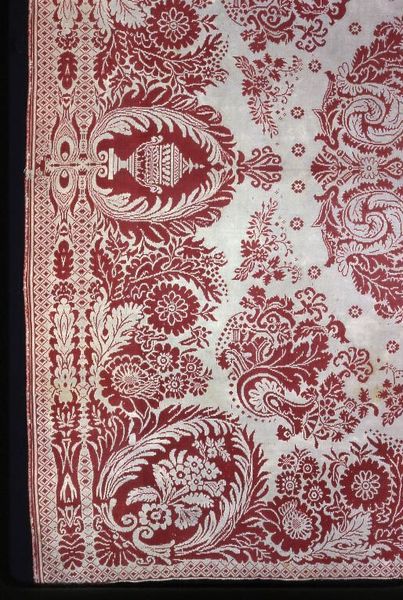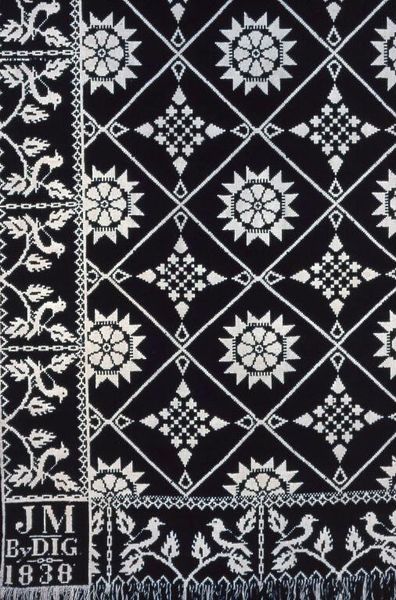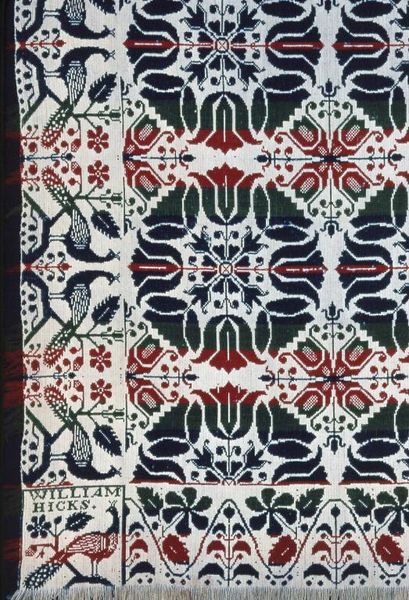
weaving, textile
#
natural stone pattern
#
naturalistic pattern
#
weaving
#
textile
#
text
#
organic pattern
#
repetition of pattern
#
intricate pattern
#
pattern repetition
#
layered pattern
#
funky pattern
#
combined pattern
#
repetitive pattern
Dimensions: 232 × 187 cm (91 1/4 × 73 5/8 in.)
Copyright: Public Domain
This coverlet was woven in 1835 by William Fasig, probably using a loom powered by the Jacquard mechanism. That’s a technology where punched cards control the lifting of the warp threads, allowing for extremely complex patterns to be woven. You can see the result in the intricate, symmetrical design – quite different from the more homespun patterns created using hand-operated looms. Fasig has even woven his name into the textile, like a kind of early digital signature! This kind of mechanization transformed the textile industry in the nineteenth century, leading to both greater productivity, and also the exploitation of labor in factories. So this coverlet isn’t just a beautiful object; it’s also a document of a changing world, where craft and industry were becoming ever more closely intertwined. It makes you consider not just the skill involved, but also the social context of its making.
Comments
No comments
Be the first to comment and join the conversation on the ultimate creative platform.
